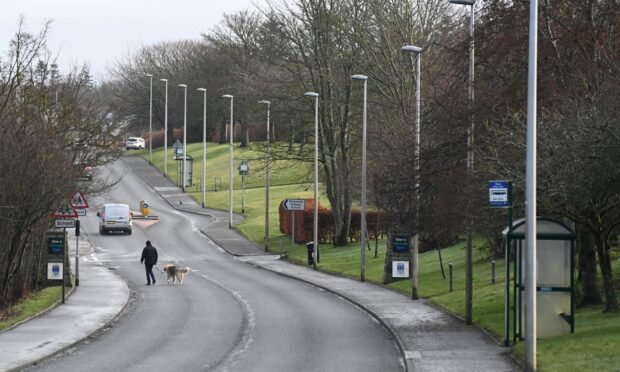Aberdeenshire Council has revealed early plans to cut its carbon footprint, and one of the big ideas on the table is to ramp up replacing all street lights with LED equivalents.
Such a project is predicted to cost around £1.4 million but would save 436 tonnes of CO2 per year. This is about the same as the emissions released by a car driving more than one million miles.
It’s not just street lights earmarked for LED switchover, however.
The proposals include a number of Aberdeenshire schools and leisure centres too, which would all be installed with the latest LED lighting technology at an additional cost of £850,000.
Why is the council so keen on changing Aberdeenshire’s street lights?
LED lights use around 80% less power than traditional bulbs while maintaining the same brightness.
This means that less electricity is needed and results in an overall reduction in carbon emissions.
Using 80% less power is also significantly cheaper on your wallet.
From switching to LED street lights, Aberdeenshire Council would save around £300,000 a year in energy costs.
For the last few years the council has already been slowly replacing street lights with LED lanterns, but even with some of the work done, street lighting still accounts for 6% of the council’s yearly carbon emissions.
It is hoped that the plans to ramp up this installation would be an easy way to lower that percentage considerably.
Is Aberdeenshire Council ahead of the curve?
These plans are part of Aberdeenshire Council’s aim to reduce its carbon emissions by 75% by 2030 (compared to 2010/2011 levels).
According to councillor Martin Ford, who is a member of the council’s Sustainability Committee, these plans have been a long time in the making.
“We’ve had a commitment to meet that 75% target for years,” he said. “But we had no real idea how to do it.”
Last year the council spent £100,000 employing sustainable consultancy firm Arcadis to put together a “route map” which would detail the council’s current carbon footprint and offer genuine solutions and real costs to reach the carbon reduction aim.
Today a document with initial proposals for cutting emissions and achievable goals for 2022/23 was discussed by committee members.
“As far as I know we are the only council taking this approach,” said Mr Ford. “We need to know what our emissions are, how much we need to save and what measures to put in place to really reduce carbon.”
Arcadis work with councils across the UK and agreed that Aberdeenshire Council is ahead of the curve, confirming that they are “certainly one of the further ahead councils, particularly in what to do with existing buildings and setting a carbon budget.”
Sometimes you’ve got to spend money to save money (and carbon)
Being first to create policies like this is never easy.
It’s also rarely cheap.
Initial costs in the report state that “a minimum requirement” to get the council on track for reducing emissions by 75% is “circa £177 million”.
But as councillor Ford points out, much of this initial expenditure will eventually pay for itself if all goes to plan – like the money-saving LEDs.
“Yes, there is upfront investment but many of these changes pay for themselves within eight years and have a lifespan of 25 years,” he said.
“So really, it’s a no-brainer. To decide not to do it would be throwing away public money.”
Of course not all the plans will pay for themselves in the long run, but the real reason this is being discussed is the need to drastically reduce carbon emissions.
The money side of things is just a bonus.
“What’s the alternative?” Mr Ford asks. Do nothing and hope climate change goes away?
Aberdeenshire Council’s plans are in line with that of the Scottish Government which has committed to a net zero greenhouse gas emissions target by 2045, five years ahead of the rest of the UK.
Even with interim goals of 75% emissions reduction by 2030, this target is among the most ambitious anywhere in the world.
“I wish we were further ahead of course, but the council has made a great deal of progress in understanding and addressing the problem,” said Mr Ford.
“I have never felt more optimistic that the council can meet that target than I do today.”




